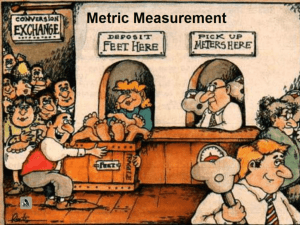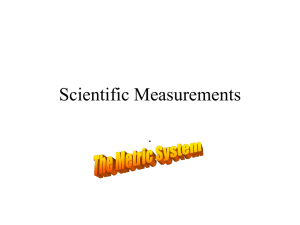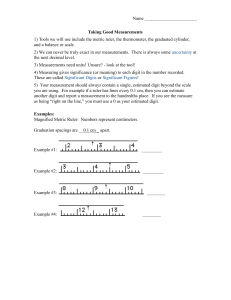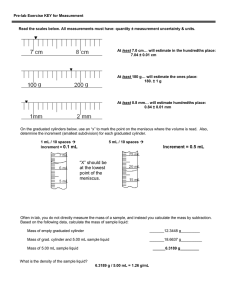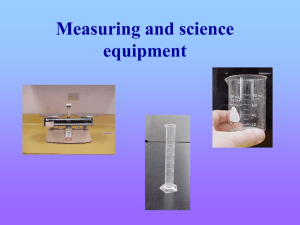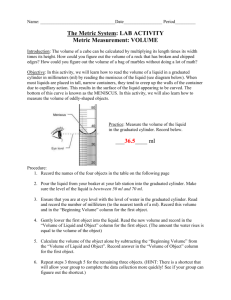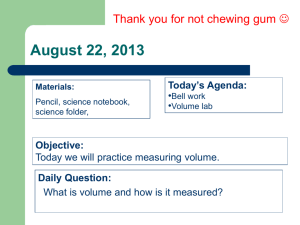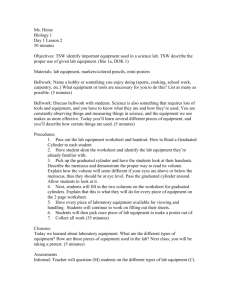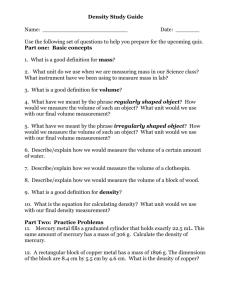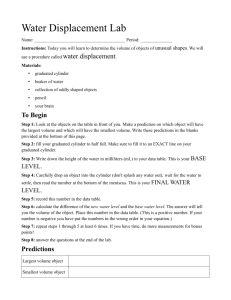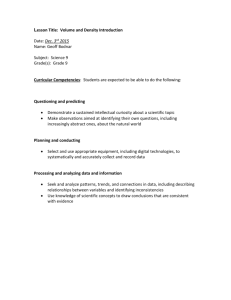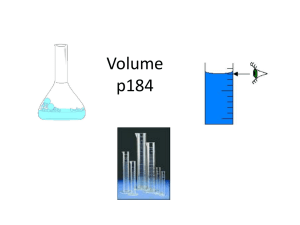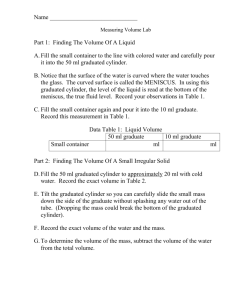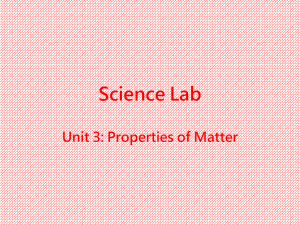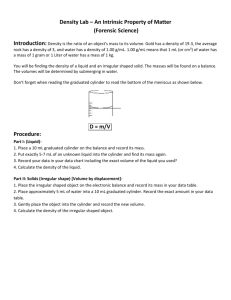Pre-lab D - Calculating Density
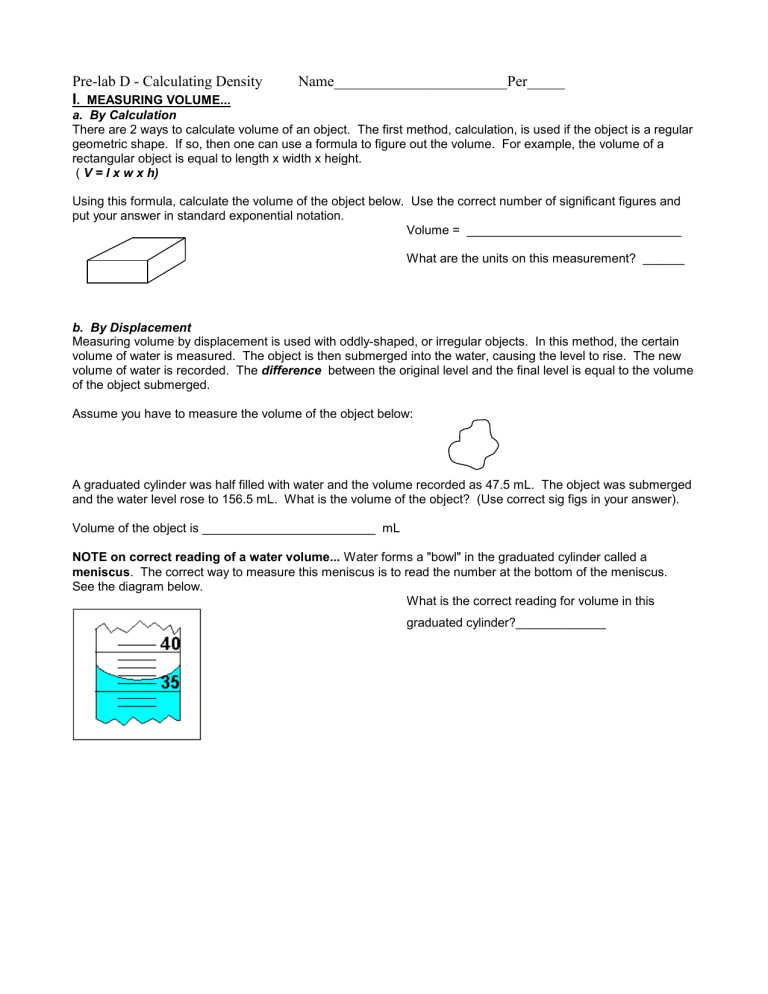
Pre-lab D - Calculating Density Name_______________________Per_____
I . MEASURING VOLUME... a. By Calculation
There are 2 ways to calculate volume of an object. The first method, calculation, is used if the object is a regular geometric shape. If so, then one can use a formula to figure out the volume. For example, the volume of a rectangular object is equal to length x width x height.
( V = l x w x h)
Using this formula, calculate the volume of the object below. Use the correct number of significant figures and put your answer in standard exponential notation.
Volume = _______________________________
What are the units on this measurement? ______ b. By Displacement
Measuring volume by displacement is used with oddly-shaped, or irregular objects. In this method, the certain volume of water is measured. The object is then submerged into the water, causing the level to rise. The new volume of water is recorded. The difference between the original level and the final level is equal to the volume of the object submerged.
Assume you have to measure the volume of the object below:
A graduated cylinder was half filled with water and the volume recorded as 47.5 mL. The object was submerged and the water level rose to 156.5 mL. What is the volume of the object? (Use correct sig figs in your answer).
Volume of the object is _________________________ mL
NOTE on correct reading of a water volume...
Water forms a "bowl" in the graduated cylinder called a meniscus . The correct way to measure this meniscus is to read the number at the bottom of the meniscus.
See the diagram below.
What is the correct reading for volume in this graduated cylinder?_____________
II. REVIEWING MEASUREMENT DEVICES...
In this lab you will need to use a ruler, a graduated cylinder, and the triple beam balance. How many decimal places (places to the right of the decimal point) should each of the measurements have? Use the diagrams below to help you.
What units will your measurements from each device give you? a. ruler _____ b. graduated cylinder _____ c. triple beam balance _____
III. PERCENT ERROR Calculations...
Frequently, we check our lab results to determine how accurate we were, by comparing our numbers to the actual or known numbers. For example, in a lab to determine the boiling point of water we may take a measurement and determine, from our lab, that water boiled at 215.6
o F.
We then compare that to the known or actual value for the boiling point of water, which is 212.0
o F. We can find our percent error by the following formula: l
(Actual value
measured value) l
x 100 = Percent Error
Actual value
So we plug in our numbers: l
(212.0
_
215.6) l
x 100 = 1.7% error
212.0
This means our measurement was 1.7% off the actual value for water's boiling point. Note that the absolute value signs in the numerator of my formula get rid of the negative sign for me.
Write down below, the order you would push buttons on your calculator to get this answer above.
Find the percent error in the data below:
Actual Value a) 1.00 g/mL
Measured Value
1.04 g/mL b) 2.5 c) 4.90 g
2.0
5.02 g
Percent Error


